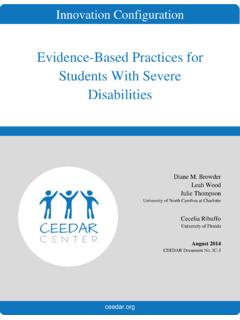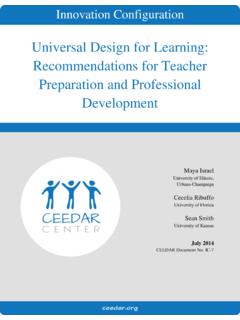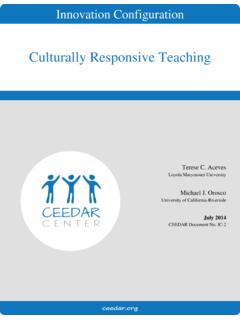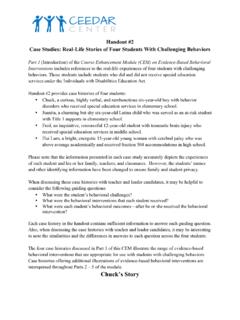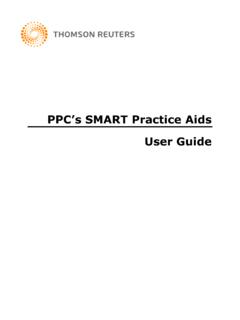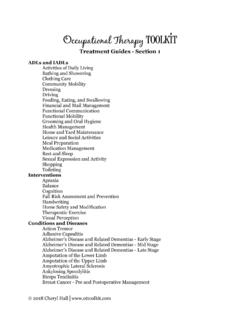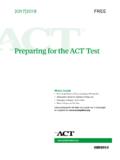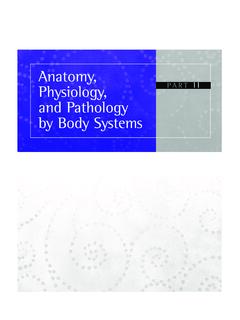Transcription of Evidence-Based Practices for Writing Instruction - CEEDAR
1 Innovation Configuration Evidence-Based Practices for Writing Instruction Gary Troia Michigan State University September 2014 CEEDAR Document No. IC-5 Page 2 of 67 Disclaimer: This content was produced under Department of Education, Office of Special Education Programs, Award No. H325A120003. Bonnie Jones and David Guardino serve as the project officers. The views expressed herein do not necessarily represent the positions or polices of the Department of Education. No official endorsement by the Department of Education of any product, commodity, service, or enterprise mentioned in this website is intended or should be inferred.
2 Recommended Citation: Troia, G. (2014). Evidence-Based Practices for Writing Instruction (Document No. IC-5). Retrieved from University of Florida, Collaboration for Effective Educator, Development, Accountability, and Reform Center website: Note: There are no copyright restrictions on this document; however, please use the proper citation above. Page 3 of 67 Table of Contents Innovation Configuration for Evidence-Based Practices for Writing Instruction .. 6 Evidence-Based Writing Practices : Essential Components .. 9 Component 1 Writing Is an Essential Part of the Curriculum.
3 9 Component 2 Varied Approaches to the Teaching of Writing .. 9 Component 3 Instruction Focused on Process Elements .. 10 Component 4 Instruction Focused on Product Elements .. 10 Component 5 Utilizing Technology in Writing Instruction .. 11 Component 6 Effective Assessment and Feedback for Writing .. 11 Component 7 Instruction Focused on Writing Skills .. 12 Component 8 Learning Through Writing .. 12 Component 9 Promoting Independent and Reflective Writers .. 12 Component 10 Promoting a Supportive Writing Environment .. 13 Evidence-Based Writing Practices : Descriptions and Suggestions.
4 13 Component 1: Practice - Providing Extra Time for Writing .. 13 Component 1: Practice - Free Writing .. 14 Component 2: Practice - Process Writing Instruction .. 15 Component 2: Practice - Comprehensive Writing Instruction .. 15 Component 2: Practice - Strategy Instruction .. 15 Component 3: Practice - Teaching Prewriting, Planning, and Drafting .. 17 Component 3: Practice - Teaching Revising and Editing .. 17 Component 4: Practice - Paragraph Structure Instruction .. 19 Component 4: Practice - Text Structure Instruction .. 19 Page 4 of 67 Component 4: Practice - Vocabulary Instruction .
5 20 Component 4: Practice - Creativity/Imagery Instruction .. 21 Component 4: Practice - Text Models .. 21 Component 5: Practice - Using a Word Processor .. 22 Component 5: Practice - Technology Applications .. 23 Component 6: Practice - Utilizing Rubrics .. 23 Component 6: Practice - Feedback .. 24 Component 6: Practice - Construct Representation and Scoring in Writing Assessment .. 24 Component 6: Practice - Presentation Effects on Writing Assessment .. 25 Component 7: Practice - Transcription Skills Instruction .. 25 Component 7: Practice - Grammar and Usage Instruction .
6 26 Component 7: Practice - Sentence-Combining Instruction .. 26 Component 7: Practices and - Decreasing Spelling and Grammar/Usage Errors .. 27 Component 8: Practice - Taking Notes .. 27 Component 8: Practice - Summarization Instruction .. 27 Component 8: Practice - Inquiry Instruction .. 28 Component 8: Practice - Writing in Response to Text .. 28 Component 8: Practice - Writing to Learn .. 30 Component 9: Practice - Self-Regulation and Metacognitive Reflection .. 30 Component 9: Practice - Setting Product Goals .. 31 Component 10: Practice - Peer Collaboration.
7 32 Component 10: Practice - Conferencing .. 33 Component 10: Practice - Teacher Modeling .. 34 Page 5 of 67 Component 10: Practices and - Authentic and Relevant Writing Tasks and Motivation . 34 Component 10: Practice - Adaptations .. 35 Conclusion .. 35 References .. 38 Appendix: Innovation Configuration for Evidence-Based Practices for Writing Instruction .. 53 Page 6 of 67 Innovation Configuration for Evidence-Based Practices for Writing Instruction This paper features an innovation configuration (IC) matrix that can guide teacher preparation professionals in the development of appropriate content for Evidence-Based Practices (EBPs) for Writing Instruction .
8 This matrix appears in the Appendix. An IC is a tool that identifies and describes the major components of a practice or innovation. With the implementation of any innovation comes a continuum of configurations of implementation from non-use to the ideal. ICs are organized around two dimensions: essential components and degree of implementation (Hall & Hord, 1987; Roy & Hord, 2004). Essential components of the IC along with descriptors and examples to guide application of the criteria to course work, standards, and classroom Practices are listed in the rows of the far left column of the matrix.
9 Several levels of implementation are defined in the top row of the matrix. For example, no mention of the essential component is the lowest level of implementation and would receive a score of zero. Increasing levels of implementation receive progressively higher scores. ICs have been used in the development and implementation of educational innovations for at least 30 years (Hall & Hord, 2001; Hall, Loucks, Rutherford, & Newton, 1975; Hord, Rutherford, Huling-Austin, & Hall, 1987; Roy & Hord, 2004). Experts studying educational change in a national research center originally developed these tools, which are used for professional development (PD) in the Concerns-Based Adoption Model (CBAM).
10 The tools have also been used for program evaluation (Hall & Hord, 2001; Roy & Hord, 2004). Use of this tool to evaluate course syllabi can help teacher preparation leaders ensure that they emphasize proactive, preventative approaches instead of exclusive reliance on behavior reduction strategies. The IC included in the Appendix of this paper is designed for teacher preparation programs, although it can be modified as an observation tool for PD purposes. The Collaboration for Effective Educator, Development, Accountability, and Reform ( CEEDAR ) Center ICs are extensions of the seven ICs originally created by the National Comprehensive Center for Teacher Quality (NCCTQ).


